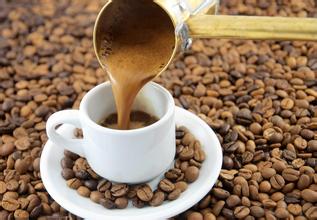Introduction to the variety and flavor of the fresh, elegant and full-grained coffee manor in Dominica
After Santo Domingo returned to Spanish rule, the local people gradually formed a consensus on independent statehood. On 30 November 1821, the former Governor of Santo Domingo, under the leadership of General Jos é N ú ñ ez de C á ceres, proclaimed statehood, named Haiti, Spain, and expected to merge under the Greater Colombian State led by President Bolivar of South America. [3]
But nine weeks later, in February 1822, the president of Haiti, Jean-Pierre Bouyer, occupied Spain and Haiti, and once again completed the reunification of the island. After Boyer occupied the eastern Spanish state of Haiti and liberated all the local slaves, Bouyer ordered the confiscation of the land of the white landlords and the complete return of the agricultural land of the whole country. Bouye also closed all universities, included all multinational (Dominican Republic for short) men between the ages of 18 and 25 in the army, and began to adopt a high-handed policy towards many countrymen. Many upper-class whites left the island and fled to Cuba, Puerto Rico and other areas. [3]
Bouye began to plant cash crops on the island, carry out tax reform and open up trade with foreign countries. Although these policies have greatly increased sugar cane and coffee production in Dominica, they are not widely accepted by farmers. Bouye thought that the liberation of many countries was a boon to many people, so he often did not pay any pay to Dominican soldiers in the army, and many soldiers began to rob local residents everywhere. This vicious circle finally led to economic stagnation and heavier and heavier fiscal taxes, causing people of many countries and even liberated slaves to unite against the rule of Bouaye and overthrew the Bouayer regime in 1843.
Carefully selected in this way, the high-quality Dominican coffee exudes a faint aroma and gives people a faint fruity aroma with a lingering finish and a smooth and smooth finish.
Dominica coffee beans (Caribbean)
Coffee in Dominica is grown in highlands and lowlands, and its taste is slightly different. The upland is sour, but the taste is rich; the lowland is less sour and tastes smoother. Boutique coffee has become popular in recent years. High-quality coffee beans produced by some Dominican estates have a rich aroma, mellow taste and moderately bright sour taste, which are not far from the more famous Puerto Rico beans or Jamaican beans, and are also worth tasting. Dominica coffee beans are mild in acidity and have a rich fruity flavor.
In the west of Hispaniola, the harvest in the mountains above 1500 meters above sea level, the rich coffee Republic of Dominica (Dominican Republic) is adjacent to Haiti, both of which own the island of Hispaniola (Hispaniola). The best place to produce is the Barahona region in the southwest, but Juncalito and Ocoa also produce a fine coffee, Santo Domingo coffee, which is characterized by freshness and elegance, fullness, excellent acidity and pleasant aroma, so it is worth it. Unlike coffee produced in Haiti, most of the coffee grown in the Dominican Republic has been washed, which is a symbol of high quality. The Dominican Republic is located in the east of the island of Haiti in the West Indies, bordering the Republic of Haiti to the west, the Atlantic Ocean to the north and the Caribbean Sea to the south. With an area of about 49000 square kilometers and a population of 7.1 million, the Dominican Republic and the Republic of Haiti coexist on an island bordering Haiti. Like its neighbours, the Dominican Republic had a history of revolution and poverty, but now it has democratic elections and the country is relatively stable.
In the early 18th century, coffee was introduced to Domiga from Martinique, and fine coffee was produced in the north represented by Hibao and in the south, including Okayabani Santo Domingo. Among them, the coffee produced by Santo Domingo and Barney, which is almost synonymous with domiga coffee, is a world-famous high-quality coffee. Santo Domingo coffee is characterized by freshness, elegance, fullness, excellent acidity and pleasant aroma, so it is worth it. The selection of Dominican coffee is usually done manually. The main basis for selection is according to the fullness of coffee particles, whether it is uniform, and then grade it. Generally speaking, coffee with full and uniform grains is easier to preserve. Only the coffee beans with the fullest and most uniform grains can be roasted to represent the best and finest coffee in the country.

Important Notice :
前街咖啡 FrontStreet Coffee has moved to new addredd:
FrontStreet Coffee Address: 315,Donghua East Road,GuangZhou
Tel:020 38364473
- Prev

Introduction to the flavor and taste of Puerto Rico coffee manor with pure taste and unique flavor
According to the Constitution formulated by the United States in 1952, the Governor is the Supreme Chief Executive, elected for a term of four years, and consists of a Council of Ministers. The United States Congress has the power to repeal laws passed by the Congress of Puerto Rico. The parliament is divided into the Senate and the House of Representatives. The island elects local commissioners to be resident in the United States Congress, but can only vote on the House Committee. [2] there are three major political parties: the people's Democratic Party and the New entrants.
- Next

Introduction to the unique and mellow Ethiopian Sidamo Chiso Coffee
Haile Selassie was made regent in 1916 and became king in 1928. On November 2, 1930, he was crowned Emperor Haile Selassie I. In 1936, Italy invaded again, occupied Addis Ababa, conquered Ethiopia, and Selassie went into exile in London. The allies defeated Italy in 1941 and Selassie I returned home on May 5 of the same year. After the domestic coup in 1974
Related
- Detailed explanation of Jadeite planting Land in Panamanian Jadeite Manor introduction to the grading system of Jadeite competitive bidding, Red bid, Green bid and Rose Summer
- Story of Coffee planting in Brenka region of Costa Rica Stonehenge Manor anaerobic heavy honey treatment of flavor mouth
- What's on the barrel of Blue Mountain Coffee beans?
- Can American coffee also pull flowers? How to use hot American style to pull out a good-looking pattern?
- Can you make a cold extract with coffee beans? What is the right proportion for cold-extracted coffee formula?
- Indonesian PWN Gold Mandrine Coffee Origin Features Flavor How to Chong? Mandolin coffee is American.
- A brief introduction to the flavor characteristics of Brazilian yellow bourbon coffee beans
- What is the effect of different water quality on the flavor of cold-extracted coffee? What kind of water is best for brewing coffee?
- Why do you think of Rose Summer whenever you mention Panamanian coffee?
- Introduction to the characteristics of authentic blue mountain coffee bean producing areas? What is the CIB Coffee Authority in Jamaica?

